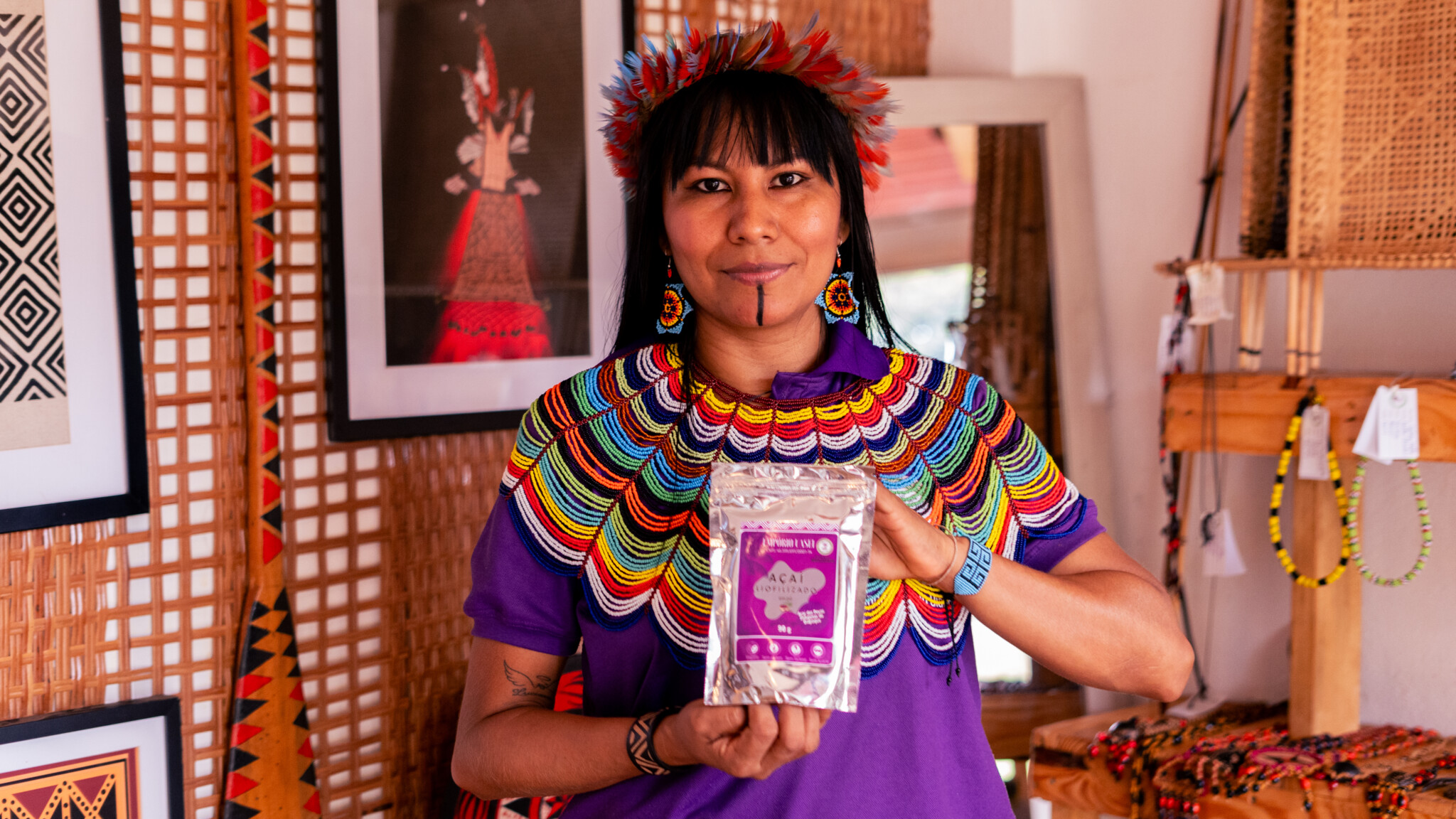
Photo: Priscila Tapajowara/If Not Us Then Who?
It’s time to reframe nature-based solutions—from risk mitigation to growth potential. The boom story is here—and it’s just getting started. At London Climate Action Week 2025, almost 300 leaders gathered at the Nature Hub this Monday to deliver a powerful message: climate and nature action is not a tale of biodiversity collapse, but a story of innovation, regeneration, and shared prosperity. Nature is an economic opportunity—particularly in agriculture, forestry, and supply chains.
The one-day event, held under the Chatham House rule, featured over 30 speakers from finance, business, government and civil society. Their message was unified: nature-based solutions are strategic tools to increase business value, attract capital, and deliver long-term returns.
Nigel Topping, Founder of Ambition Loop and former UN Climate Change High-Level Champion at COP26, described the momentum as a rebranding of nature, making it more accessible for investment. “It’s going to be exponential, and you’ve got to be more granular to get into problem-solving work. Conservation, restoration, regenerative agriculture, and social enterprise—these require tailored capital strategies. People who are comfortable doing the hard work to understand risk are winning,” he said.
“If you’re in the private sector and you’re not seriously mobilizing your human capital to engage in problem-solving activities for investing in nature, then you’re already behind the game.”
Nigel Topping, Founder of Ambition Loop and former UN Climate Change High-Level Champion at COP26
Recent news shows that private finance for nature has surged elevenfold in four years—from $9.4 billion to over $102 billion. This market evolution was also celebrated by Mark Wishnie, Chief Sustainability Officer at BTG Pactual Timberland Investment Group, who shared that the Brazil Restoration and Bioeconomy Finance Coalition has already mobilized $2.6 billion toward its $10 billion goal by 2030. “What’s different now is the convergence of conditions: the need for private finance, strong government leadership, and market pressure for investments that benefit climate, nature, and people. We can’t do this alone—we need partners, collaborators, and alignment to scale restoration. We’ll go faster and further if we go together.”
This shift in mindset was reinforced by the launch of Pollination’s second Nature Finance Focus report, a spotlighted release in the Hub corridors. The findings were striking: 99% of surveyed institutional investors across the UK, USA, Australia, Singapore, and Japan plan to increase their nature-related investments—even as 96% acknowledge that the politicization of ESG is influencing their strategies.
UK Leadership and Global Ambition
UK Minister for Nature and Labour MP for Coventry East, Mary Creagh, opened the Hub with a call to transform the financial system to reflect the true value of nature. She highlighted the UK’s efforts to pioneer new models of nature-positive investment, including blended finance vehicles that de-risk private capital and outcome-based funding that rewards measurable environmental gains.
“The UK is helping to shape a new generation of financial solutions that work for people, planet and prosperity, because that is the future of finance.”
Mary Creagh, UK Minister for Nature and Labour MP for Coventry East.
Creagh also announced that the UK will host the twelfth Plenary of the Intergovernmental Science-Policy Platform on Biodiversity and Ecosystem Services (IPBES12) in Manchester, February 2026. The event will serve to unveil the Business and Biodiversity Assessment, a landmark report offering businesses the tools to measure and act on their biodiversity impacts. A year-long parallel programme will support this, with the UK government partnering with institutions including Kew Gardens and the Zoological Society of London—and inviting global businesses to join. To support this initiative, the UK is seeking financial commitments from leading institutions to match its £1 million pledge, aiming to build a platform that unites private sector leadership with public action.
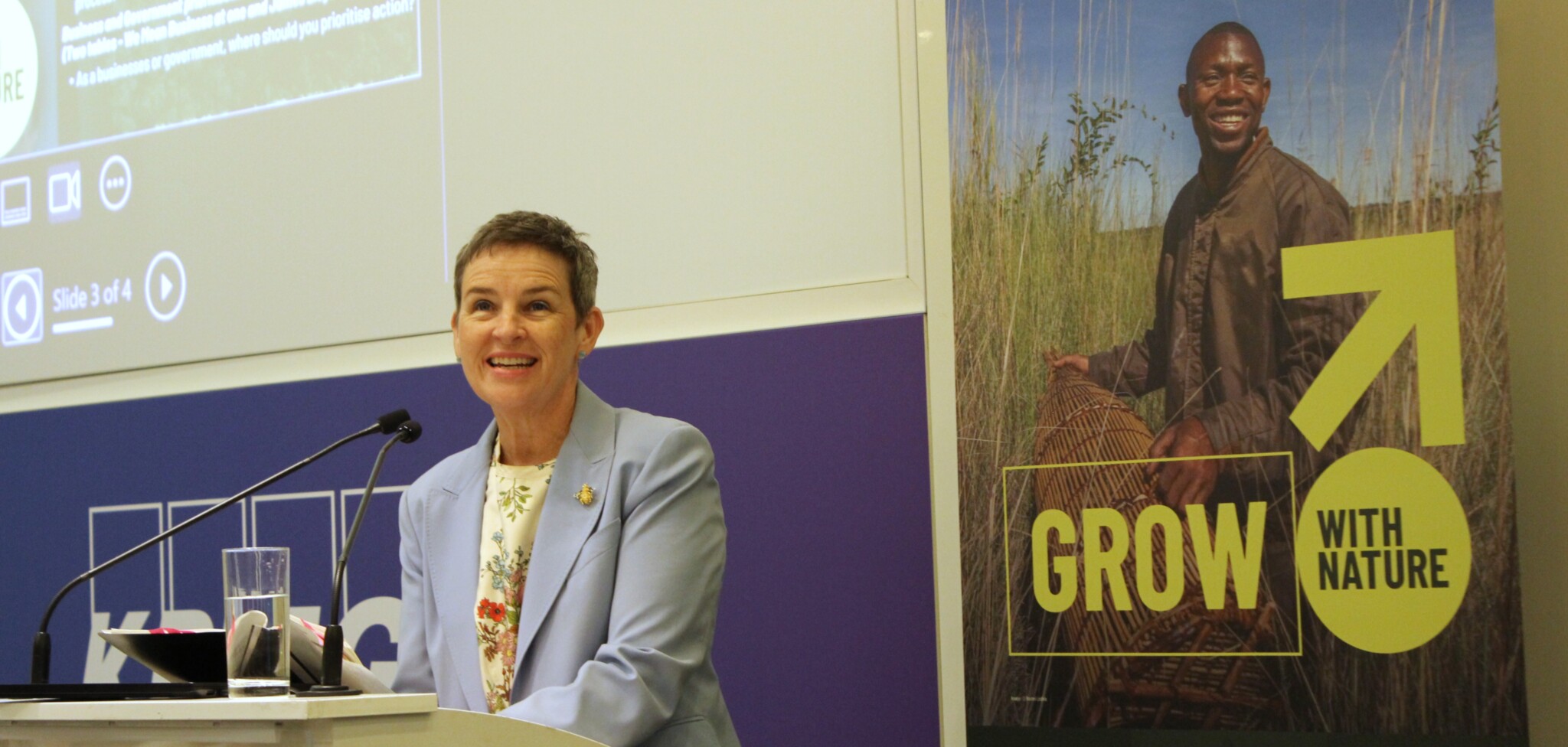
Mary Creagh, UK Minister for Nature and Labour MP for Coventry East.
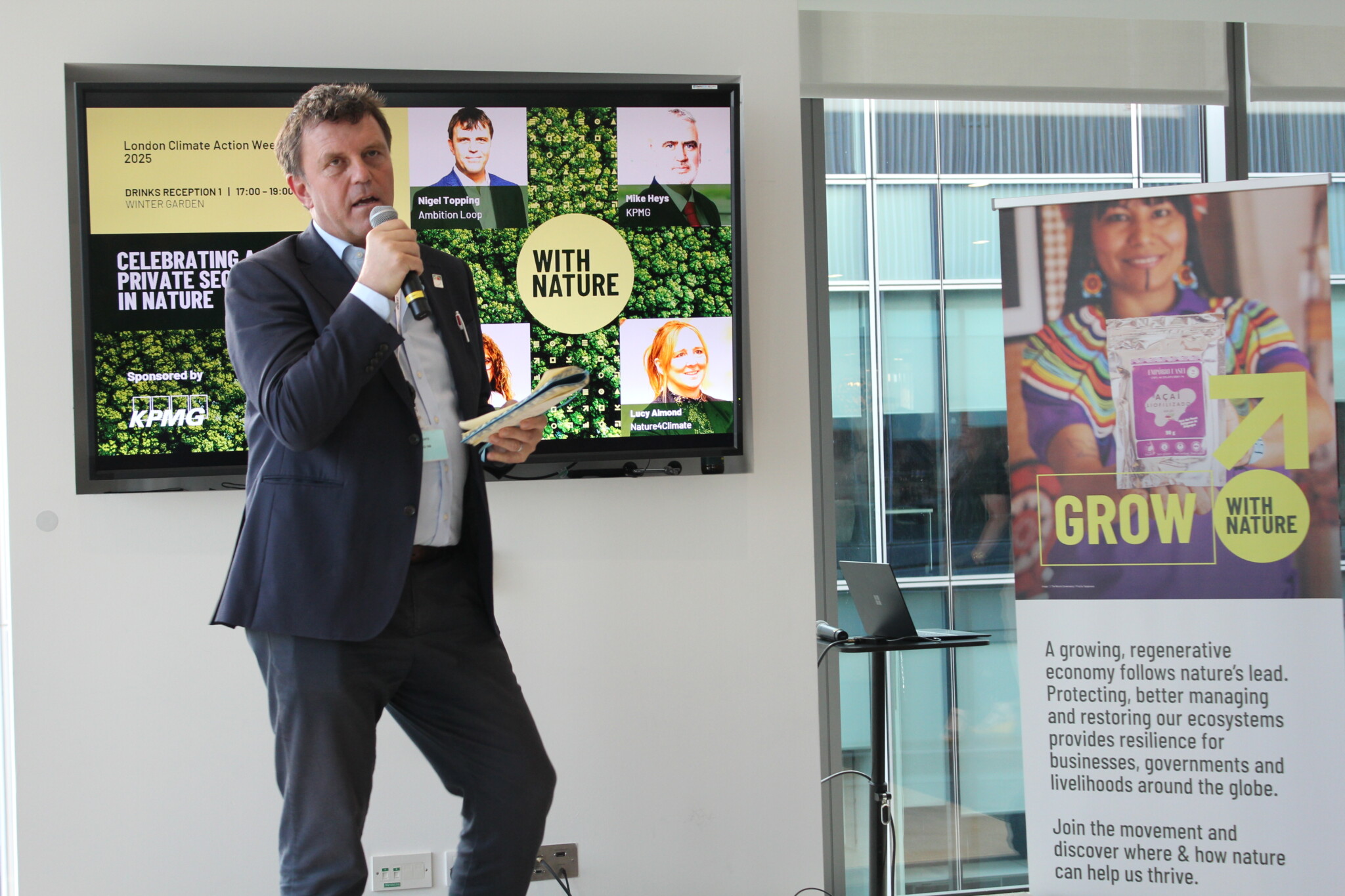
Nigel Topping, Founder of Ambition Loop and former UN Climate Change High-Level Champion at COP26
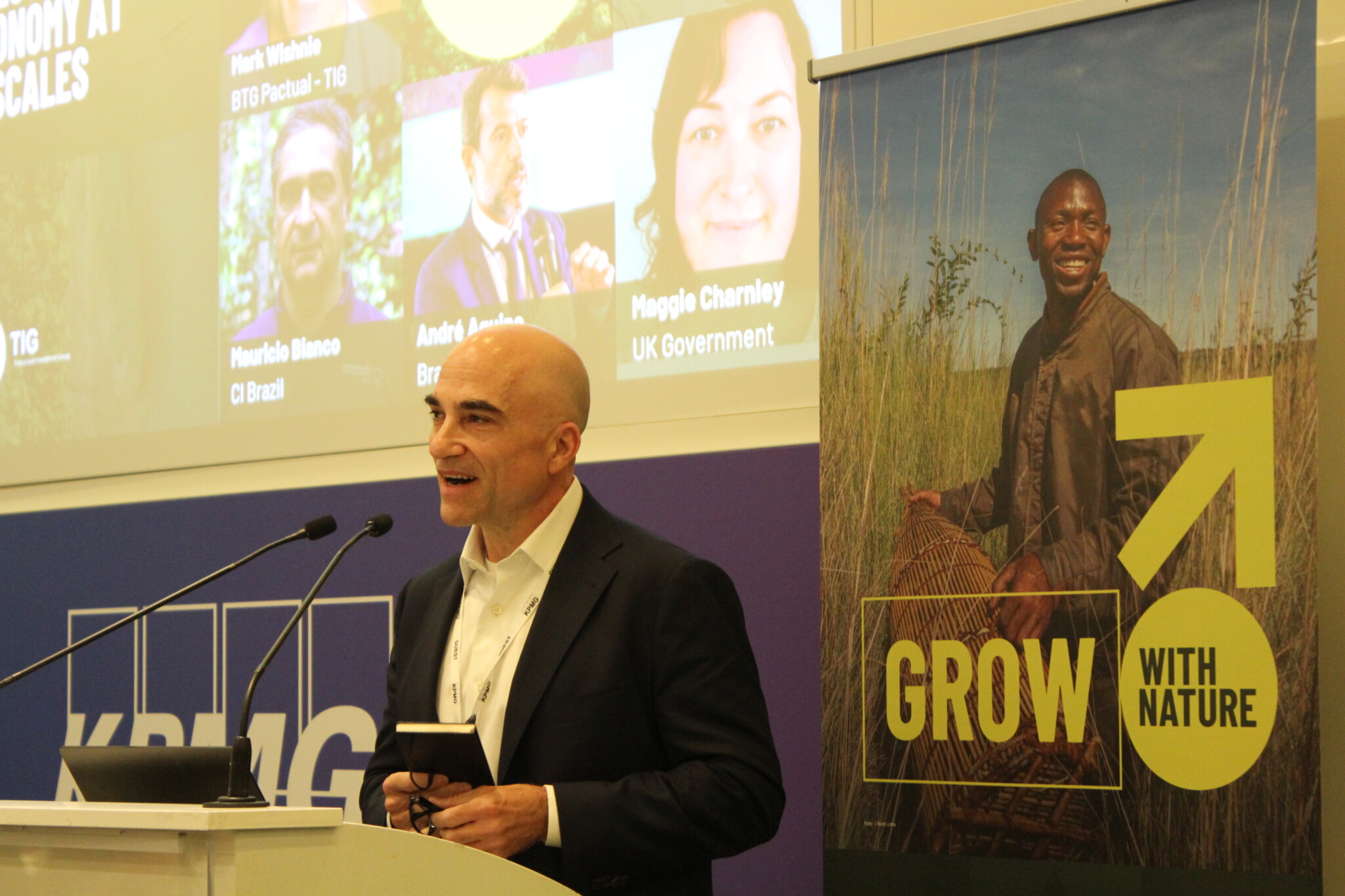
Mark Wishnie, Chief Sustainability Officer at BTG Pactual Timberland Investment Group

Discussion 1: Making the case for private sector partnerships with governments to drive landscape-scale investments in nature-based solutions.

Discussion 1: Making the case for private sector partnerships with governments to drive landscape-scale investments in nature-based solutions.

Discussion 1: Making the case for private sector partnerships with governments to drive landscape-scale investments in nature-based solutions.
The Perfect Match: Aligning Business Operations with Climate Policy
The day’s discussions began with a compelling shift in tone: nature investments are not about avoiding losses—they’re about building something better. The first session brought together voices from policy, finance, and business to explore how nature can drive growth and how businesses can align long-term environmental policy with short-term operational pressures.
The idea of localizing action resonated throughout the discussion. Abyd Karmali, Managing Director of Environmental and Social Business Advisory at Bank of America, pointed to real-world examples where national strategies are shaped by private sector collaboration—from Colombia’s biodiversity roadmaps to Brazil’s land restoration policies. “National-level policy changes—like Brazil’s emphasis on land restoration—can significantly increase investor confidence and unlock private finance,” he noted.
However, unlocking capital isn’t just about policy—it’s also about structure. A recurring theme was the capital mismatch: large-scale funds exist at the top, but the “missing middle” needed to operationalize projects remains underdeveloped. This gap, compounded by slow deal structuring and fragmented governance, often prevents promising initiatives from moving forward. Participants stressed the need to streamline processes and demonstrate early success to build investor confidence.
Blended finance emerged as a powerful solution. By using philanthropic and public capital to de-risk investments, projects can become more attractive to private investors. Kenya’s regulatory clarity around carbon markets was cited as a model, showing how legal frameworks can unlock integrated finance solutions.
Rather than building parallel systems, some advocated for integrating nature into the climate finance ecosystem—“riding the climate train” by using existing infrastructure like carbon markets to deliver nature-positive outcomes. They emphasized removing silos in policy development by involving finance, agriculture, and industry ministries from the beginning to ensure more effective implementation.
Are Investors Ready?
The second discussion focused on finance, asking whether investors are truly prepared to back nature-based solutions at scale. The answer was cautiously optimistic. “Right now, land is priced on yield. In the future, we will be pricing land on soil organic carbon,” said Rob Appleby of Cibus Capital.
Nature-based investment is maturing, with private equity and venture capital increasingly targeting restoration, biodiversity, and carbon projects. The panellists agreed that we’re seeing more deals from companies operating in emerging markets but structured like developed market investments—especially in nature-focused ventures in regions like West Africa. Still, early-stage financing remains a major bottleneck. “It is easier to get 200 million into nature-based projects than 2 million,” one Hub participant observed.
Aggregation and intermediation structures were flagged as essential to connect institutional investors with local initiatives. Development finance institutions (DFIs), once cautious, are now more engaged—especially through fund-level participation and guarantees.
Land strategy emerged as another critical factor. Long-term leasing, local partnerships, and avoiding high-conflict zones are key to de-risking land-based investments. But land tenure and territorial risks continue to block capital deployment in many regions. “We need the private sector. That’s why we need entrepreneurs who understand nature as a service,” said one participant. “To have successful sustainability, you have to offer profitable certainty for stakeholders. Without clear proof points and viable business models—especially in food systems and carbon markets—investors will remain hesitant.”
Nature Appreciates Over Time
The third session brought corporate leaders to the stage to share how they’re embedding nature into business strategies. The panel was clear: nature isn’t just a cost center—it’s a long-term asset.
Anna Chilton, Nature Lead at ING, highlighted a key imbalance: “The risk side is extremely well developed. What is less developed is the opportunity side.” While ESG risk frameworks are mature, financial institutions still lack the scientific clarity and metrics needed to steer capital toward nature-positive outcomes.
From the food retail sector, Celia Cole emphasized that reframing sustainability through resilience helped her in the past to align nature with executive priorities. “Sustainability is about the future strength of the business,” she said.
Brazilian pulp and paper giant Suzano offered a powerful example. Managing 2.7 million hectares—40% dedicated to conservation—the company is integrating nature and climate resilience into its long-term strategy. “We are suffering the impacts of climate change in our operations,” said Helena Pavese, Head of Institutional Sustainability at Suzano. Restoration began as a legal obligation but has become a strategic asset.
“Nature is infrastructure. So investment is not optional.”
Nature Hub participant.
Another recurring theme was the need to treat nature as infrastructure, critical to economic resilience and national stability. This framing helps drive internal alignment and board-level buy-in. “At the moment, many executives and investors just don’t understand the value of nature, but they do understand land. They understand infrastructure. We need to meet them there.”
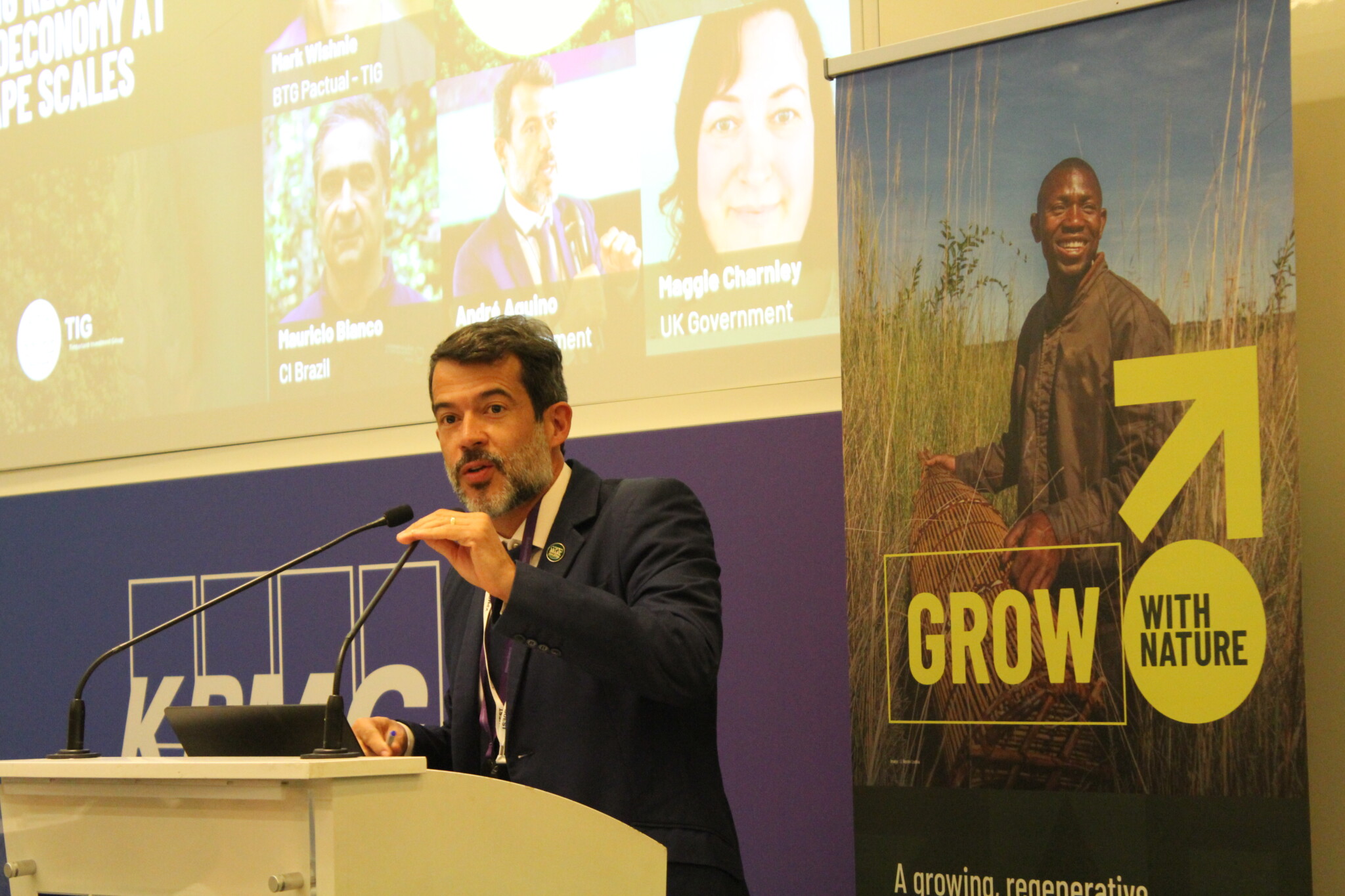
André Aquino, Head of the Special Advisory on Economy and Environment at Brazil’s Ministry of Environment and Climate Change
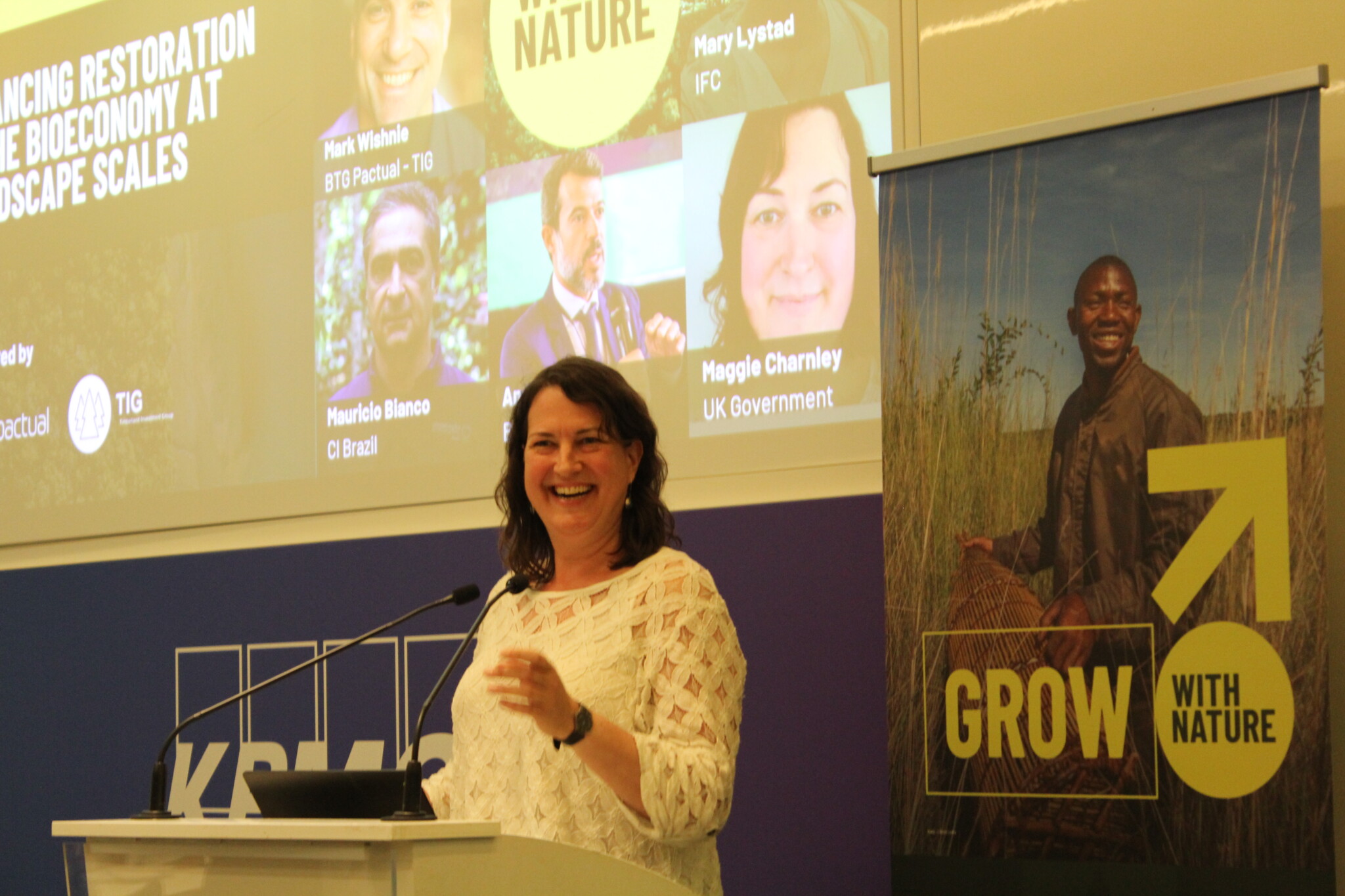
Maggie Charnley, UK government’s International Forests Unit
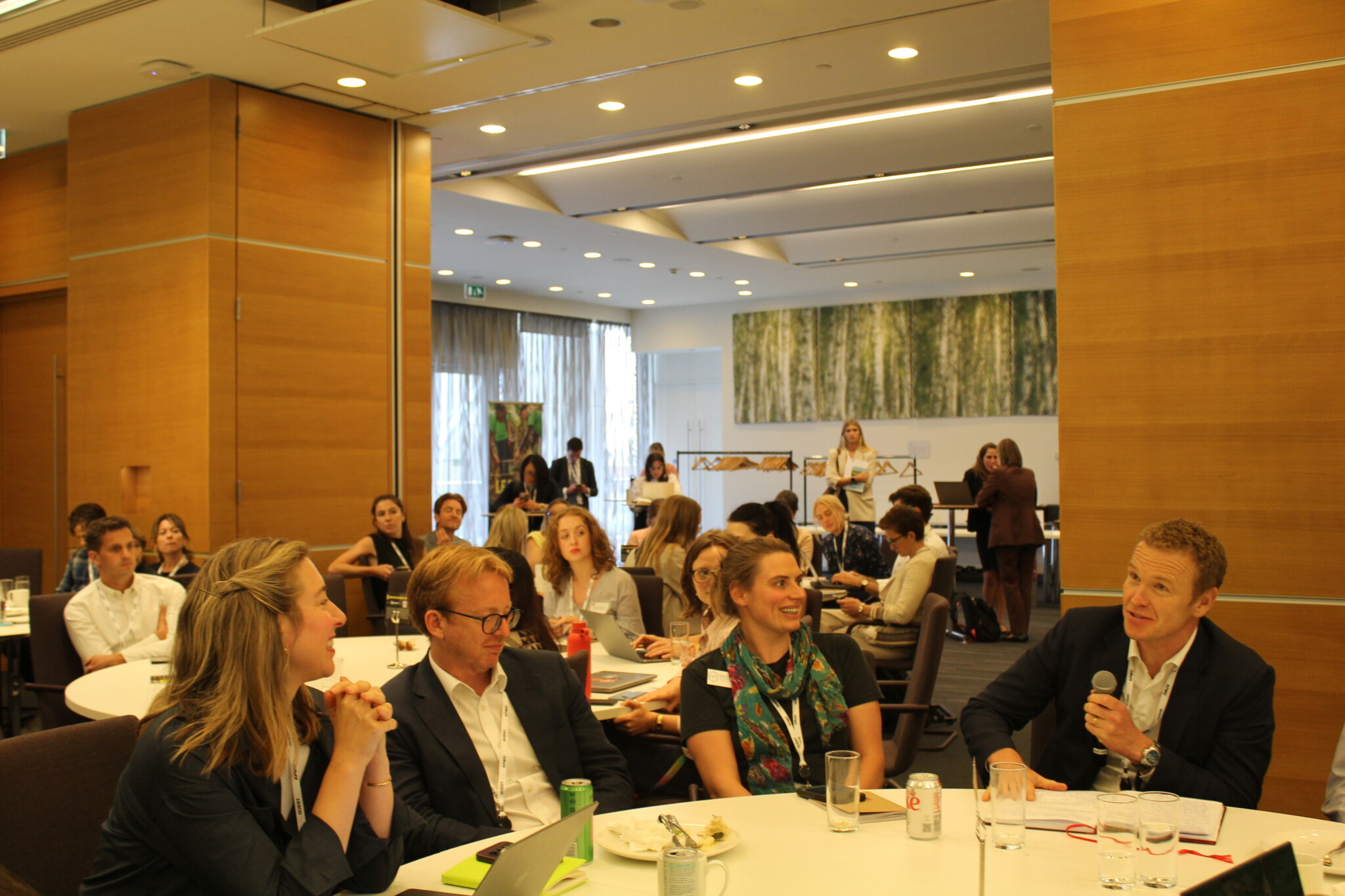
Discussion 2: Are investors ready to support them to deliver climate and nature outcomes at scale?
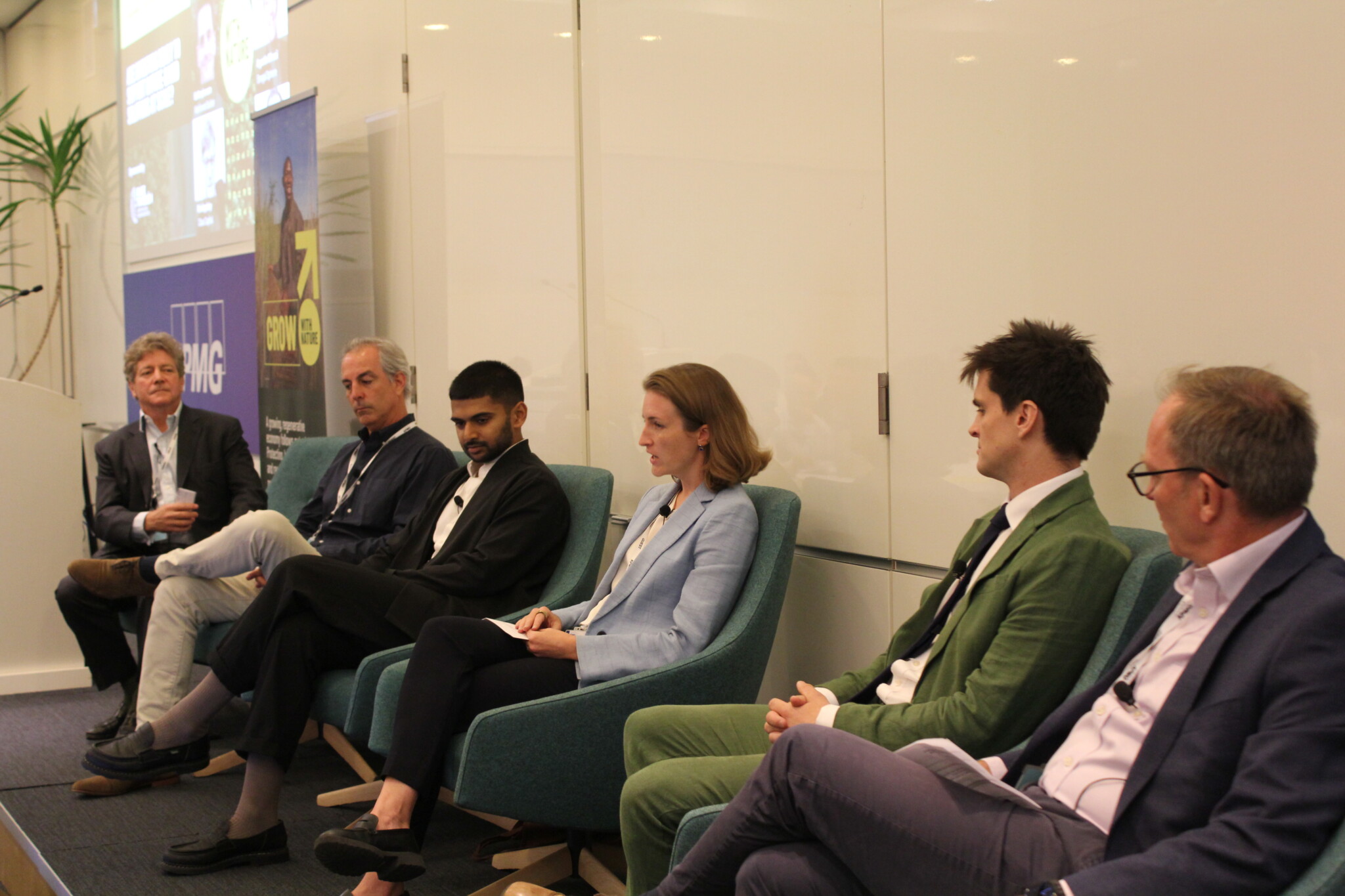
Discussion 2: Are investors ready to support them to deliver climate and nature outcomes at scale?

Discussion 3: How can we keep corporate action on climate and nature on track?

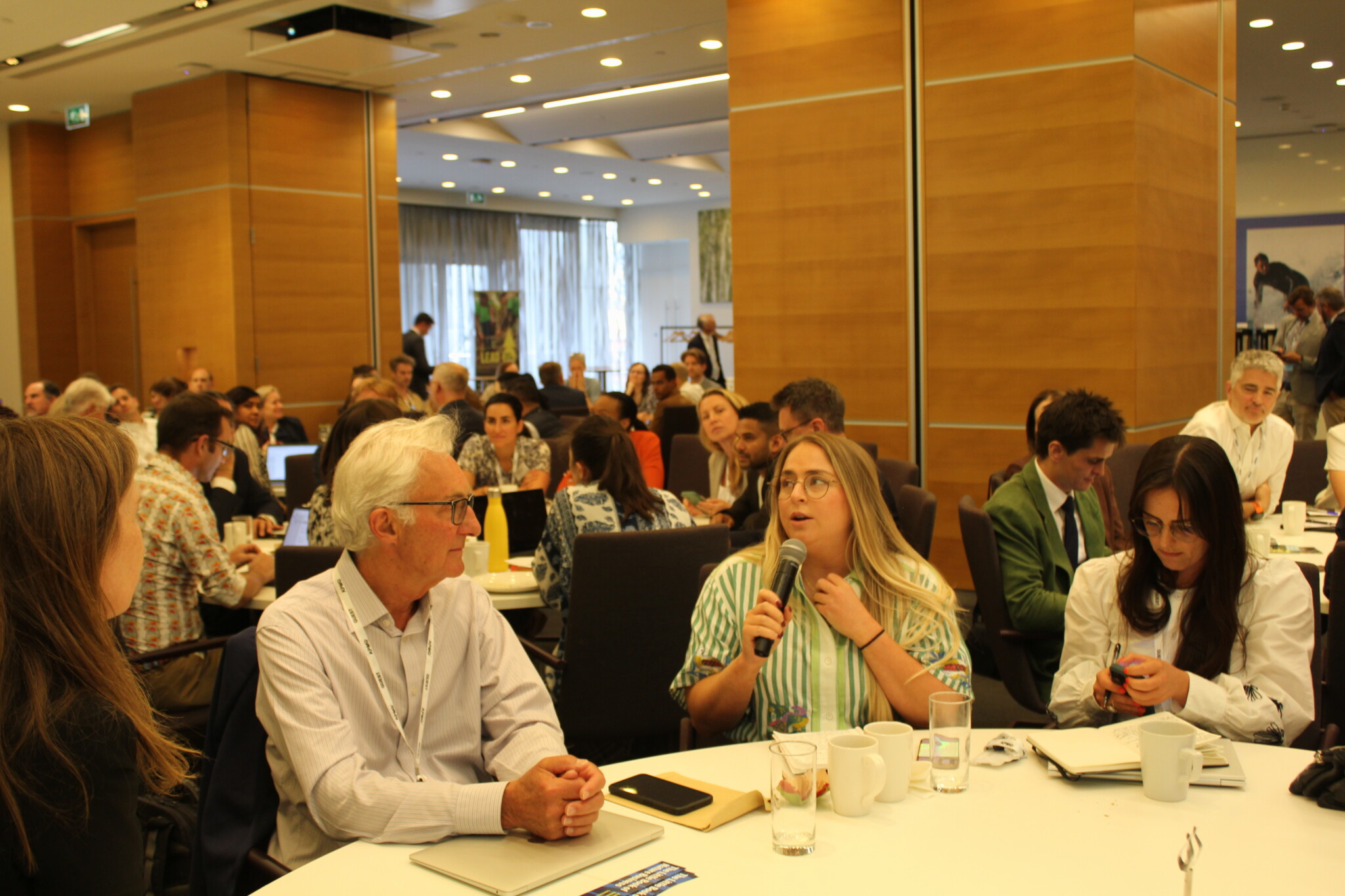

Nature for People
The fourth and final discussion of the day shifted the spotlight to people—emphasizing job creation and the transformative potential of systemic change over isolated investments in reversing biodiversity and nature loss.
André Aquino, Head of the Special Advisory on Economy and Environment at Brazil’s Ministry of Environment and Climate Change, outlined Brazil’s vision for financing standing forests. He highlighted the development of the Tropical Forest Forever Facility (TFFF) to scale performance-based financing for forest conservation, and the country’s commitment to restoring 12 million hectares under its NDC—with growing private sector participation. “Not all restoration is the same,” he emphasized. “We need to get it right—with biodiversity, with social justice. The models must provide jobs, respect land rights, and add value to the territory.”
Mauricio Bianco, Vice President of Conservation International Brazil, echoed this sentiment: “In countries like Brazil, it’s critical that we spotlight not just nature, but people—how we generate income and create jobs through restoration.” He stressed that philanthropy and public funds alone cannot bridge the climate and nature finance gap. “Embedding restoration into business models is key to making nature-positive investments viable.”
On the progress of the TFFF, Maggie Charnley, who leads the UK government’s International Forests Unit, noted: “No one has ever solved the problem of financing something that exists. That’s why the TFFF is pioneering—it focuses on conserving intact forests, a historically underfunded area.” She also emphasized that restoration is not only ecological but strategic—protecting forest edges and enabling sustainable agriculture on already cleared land. “This is one of those areas that cuts across all three Rio Conventions—on land, biodiversity, and climate.”
Mary Lystad, Investment Lead for Forestry, Wood Products, and Nature-based Solutions at the IFC, underscored the need for economic viability: “Restoration must provide economic opportunity for landowners. Only then can we address the root causes of deforestation and ensure long-term success.”
Speakers also highlighted the role of public procurement and trade policy in supporting bio-based products and sustainable sourcing. Investment in research—especially for native species—was deemed essential to build the technical foundation for large-scale restoration.
The boom story is not just about vision—it’s about execution.
